Another view of the Sun
Your white-light photographs of the Sun are in the can. Now, wouldn’t prominences be exciting? You’ll need special filters for this.
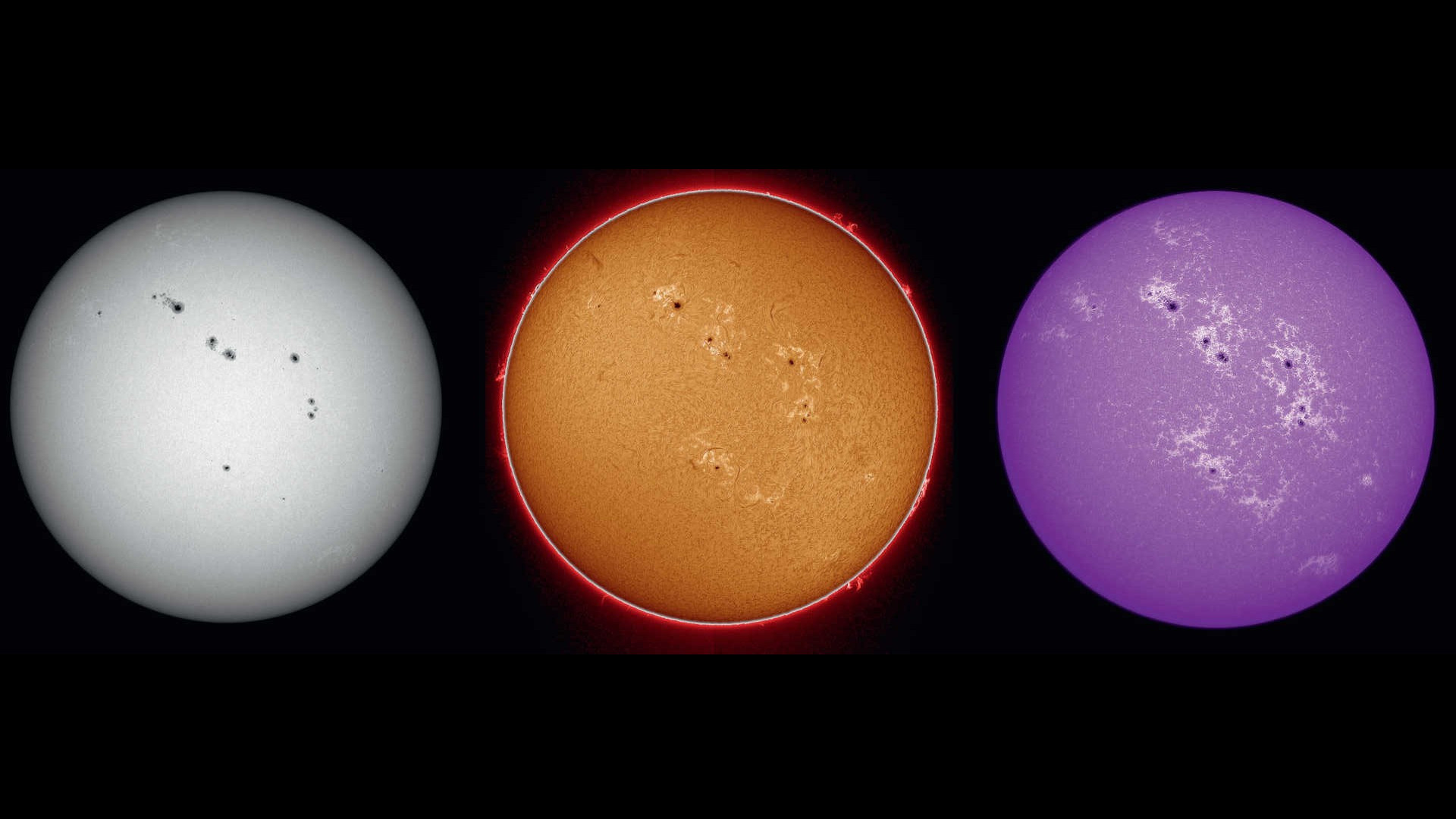 Views of the Sun in white light, in Hα light and in CaK light. An uncooled CCD camera together with a short focal length telescope with a 60-mm aperture and a 600-mm focal length was used to create these images using a foil filter, a Hα filter and a CaK filter. Combination of composite images, each created from 500 images from a 2,500 image capture sequence. U. Dittler
Views of the Sun in white light, in Hα light and in CaK light. An uncooled CCD camera together with a short focal length telescope with a 60-mm aperture and a 600-mm focal length was used to create these images using a foil filter, a Hα filter and a CaK filter. Combination of composite images, each created from 500 images from a 2,500 image capture sequence. U. DittlerSolar photography in Hα and calcium light
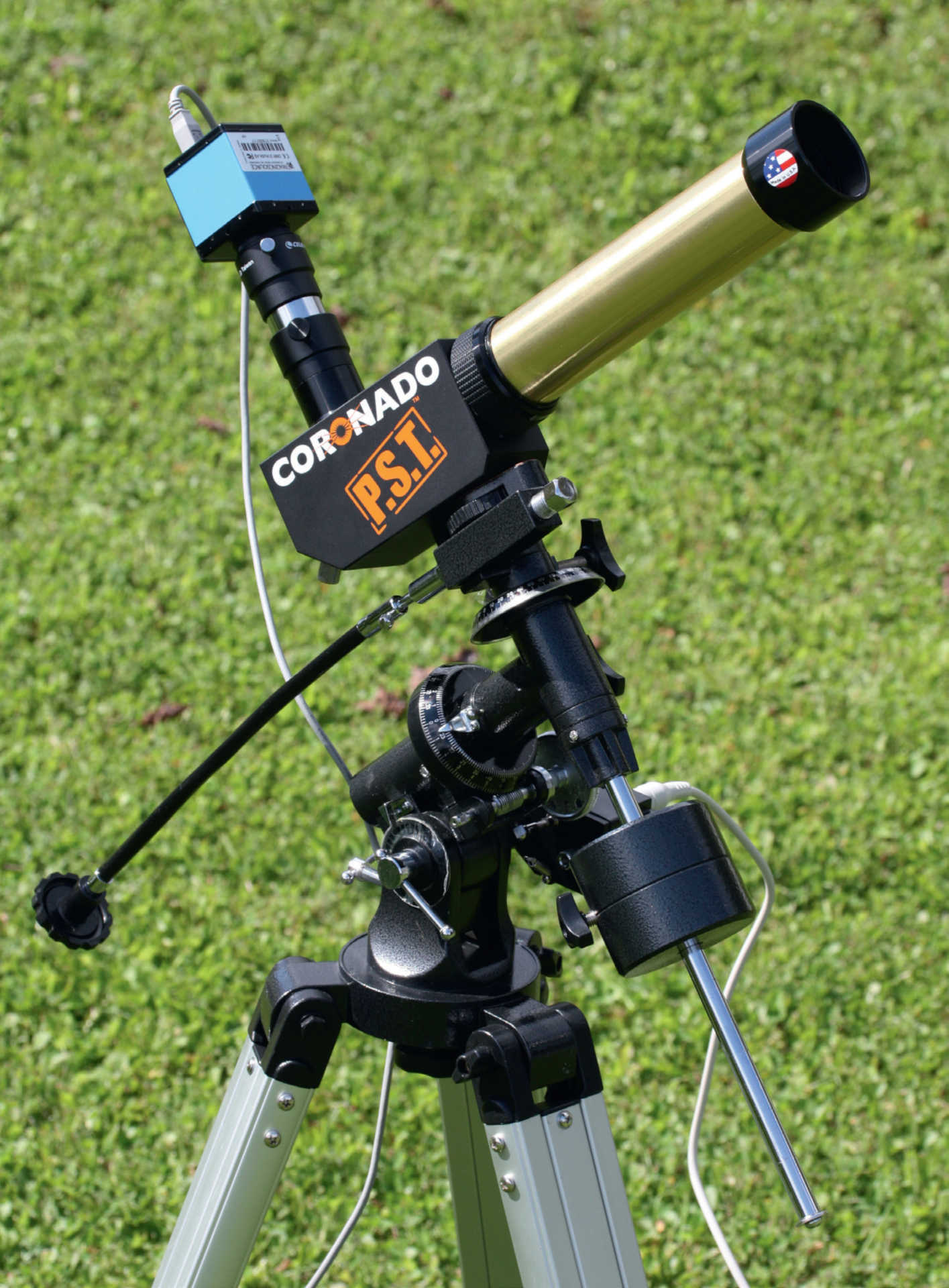 The Coronado Personal Solar Telescope is a popular entry-level instrument for Hα solar photography, here shown with a Barlow lens and camera on a small EQ2 mount. U. Dittler
The Coronado Personal Solar Telescope is a popular entry-level instrument for Hα solar photography, here shown with a Barlow lens and camera on a small EQ2 mount. U. DittlerBesides observing and photographing the Sun in white light, photographing the Sun in Hα light and in calcium light is an exciting challenge for many amateur astronomers. In this way, the structures of sunspot regions on the Sun’s surface or prominences and filaments can be made visible.
In Hα light, you can see the approximately 2,000 km thick layer of the chromosphere, which is located above the photosphere visible in the white light of classical solar photography. Observation is much more difficult, since its luminosity is only one millionth of the luminosity of the photosphere. In the chromosphere, phenomena such as prominences and filaments are visible. But you can also see chromospheric regions of faculae and solar flares.
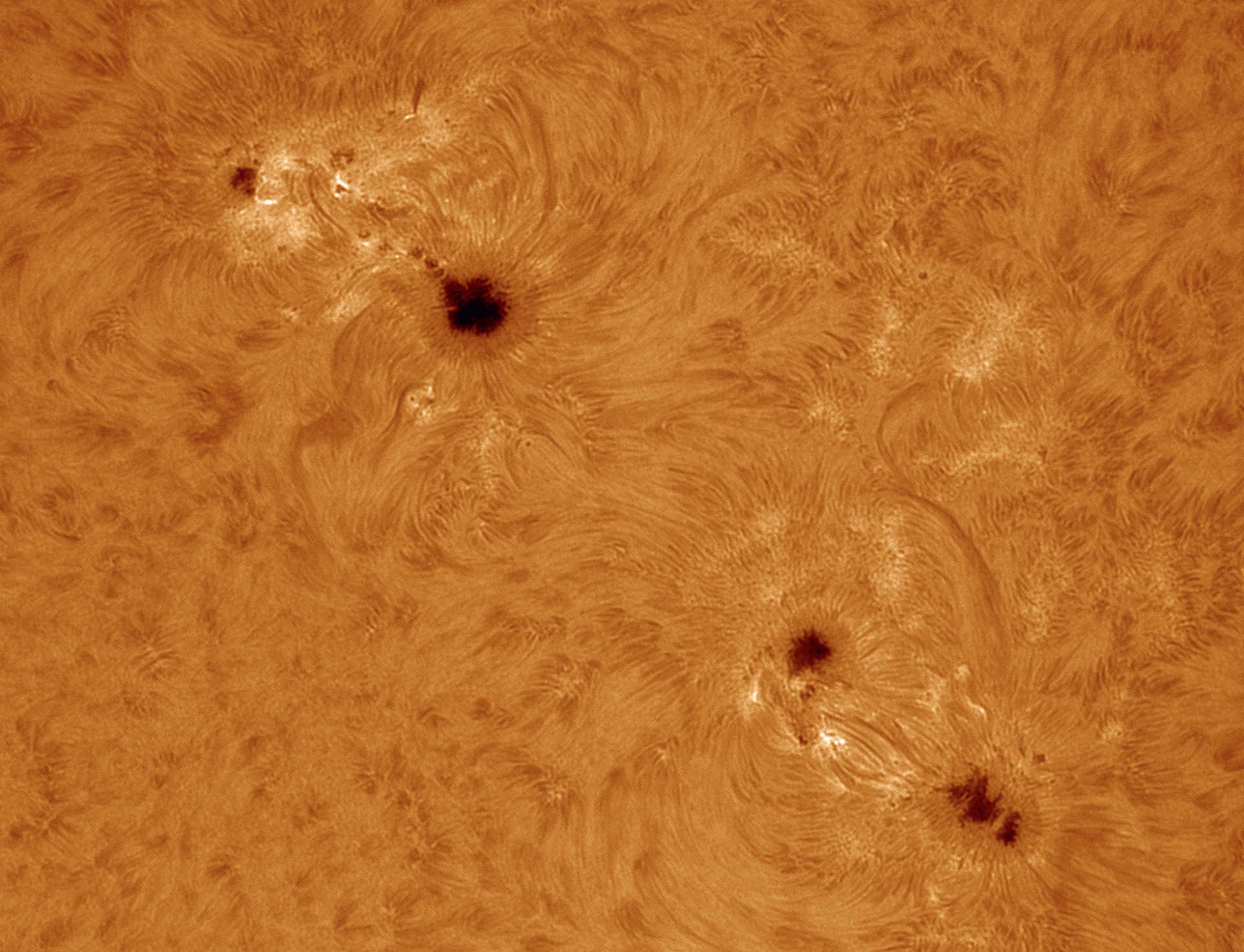 Sunspots in Hα light. Created with a Coronado Solarmax90 filter on a refractor with a focal length of 2000 mm, aperture: 90 mm; uncooled CCD camera; 500 of 2,500 frames processed in AviStack2 and Photoshop. U. Dittler
Sunspots in Hα light. Created with a Coronado Solarmax90 filter on a refractor with a focal length of 2000 mm, aperture: 90 mm; uncooled CCD camera; 500 of 2,500 frames processed in AviStack2 and Photoshop. U. DittlerIt all depends on the full width at half maximum
A Hα filter is required for observing. It is used to allow only certain wavelengths to pass through: the light with a wavelength of 656.28 nm, which is produced when a hydrogen atom’s electron falls from the third to the second energy level. The following simplified rule applies for the effectiveness of such a filter: the smaller the full width at half maximum, the more details are visible, but also the less light is available. Filters with a full width at half maximum of more than 1.0Å (0.1nm) show only prominences at the Sun's edge, while filters between 0.8Å and 0.7Å also show filaments and regions of faculae on the surface of the Sun. Filters with a full width at half maximum below 0.6Å also show more detailed and high-contrast images of the Sun's surface.
Observing in calcium light
Just as the view of the Sun in the narrow band of Hα light differs significantly from the view in white light, so too does the view in calcium light (CaK light at 393.4 nm) differ from the that in Hα and white light. One difficulty in visually observing the Sun in calcium light is that the human eye becomes less sensitive with age in this part of the spectrum. However, CCD chips are usually sufficiently sensitive in this area, so that a photographic documentation of the Sun viewed in CaK light is definitely possible.
The imaging technique
The imaging procedure for photographing the Sun Hα and CaK photography is no different to that of white light. Also in Hα and CaK light, it is recommended to capture several hundred (or thousand) images of the Sun as a video with a CCD camera and then use this video to create an optimised composite image using digital image processing. Even in the case of narrow-band Hα and CaK photography, there is still sufficient light available, so that the respective exposure time of the individual images is only a fraction of a second, and even long film sequences can be created within a few minutes.
Selecting the subject
The most striking subjects for Hα solar photography are prominences: huge explosions of hydrogen gas that are closely connected to sunspots. With less expensive instruments, these impressive structures are best observed at the edge of the solar disk. The dramatic spectacle of their change in form and intensity can be observed over just a few minutes and can be photographically documented over several hours. In addition to prominences at the Sun's edge, narrow-band Hα telescopes can also be used to photograph dark filaments, i.e. prominences beyond those visible at the Sun's edge. In addition, plages, also known as Hα faculae, appear as bright areas around sunspots.
Photographing the Sun in CaK light reveals structures that are clearly different to those visible in white light and Hα light (even if, as with the Hα line, it only reveals a certain area of the chromosphere). Very high contrast images of solar faculae and sunspots especially can be photographed in the calcium line.
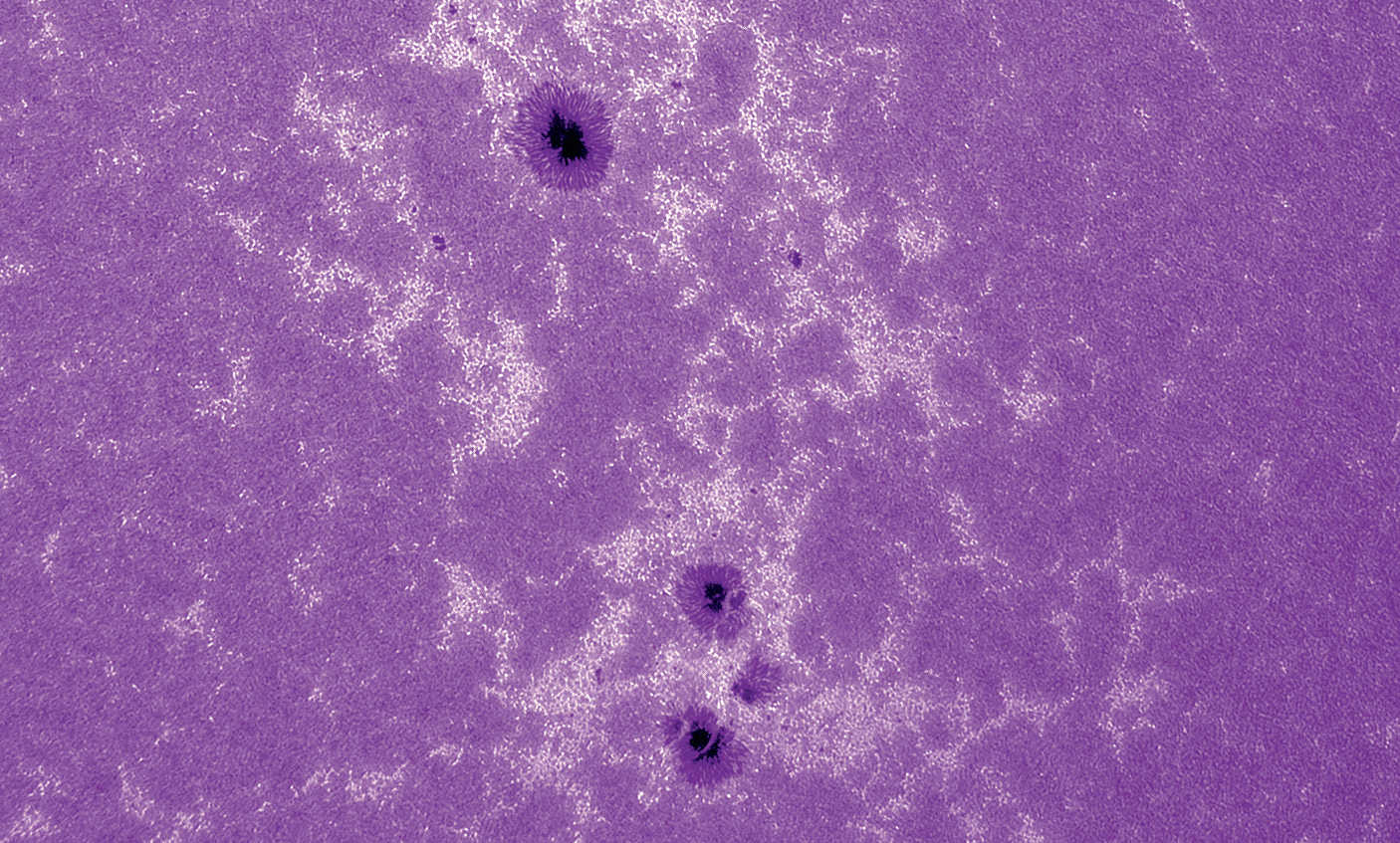 Calcium image of the Sun. Lunt CaK module (B600) on a refractor with 2,250 mm focal length, aperture 130 mm, uncooled CCD camera; 500 of 2,500 frames processed in AviStack and Photoshop. U. Dittler
Calcium image of the Sun. Lunt CaK module (B600) on a refractor with 2,250 mm focal length, aperture 130 mm, uncooled CCD camera; 500 of 2,500 frames processed in AviStack and Photoshop. U. Dittler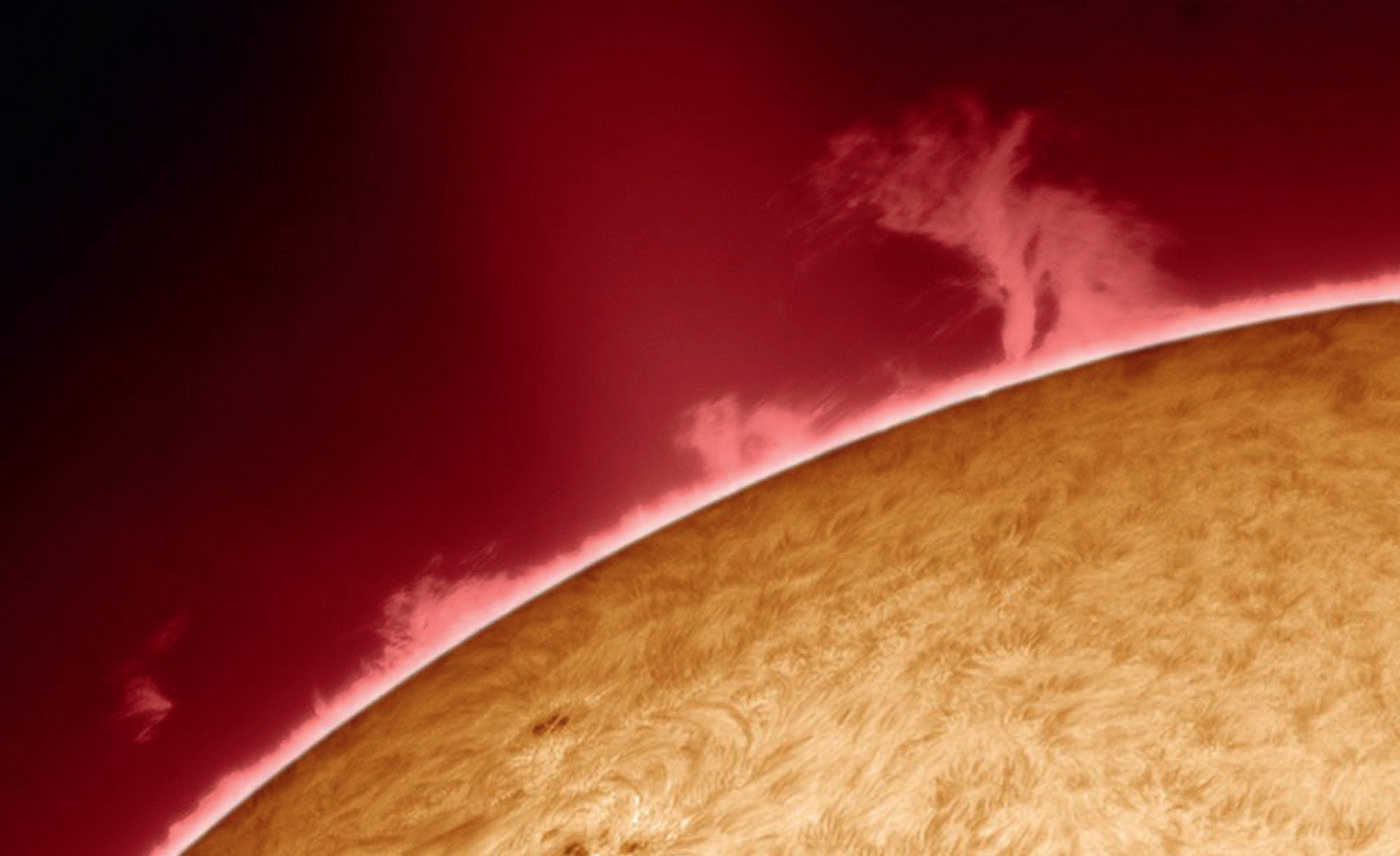 Prominences in Hα light. Created with a Coronado Solarmax90 filter on a refractor with 2,000 mm focal length, aperture: 90 mm; uncooled CCD camera; 500 of 2,500 frames processed in AviStack2 and Photoshop. U. Dittler
Prominences in Hα light. Created with a Coronado Solarmax90 filter on a refractor with 2,000 mm focal length, aperture: 90 mm; uncooled CCD camera; 500 of 2,500 frames processed in AviStack2 and Photoshop. U. Dittler Author: Ullrich Dittler / Licence: Oculum-Verlag GmbH
